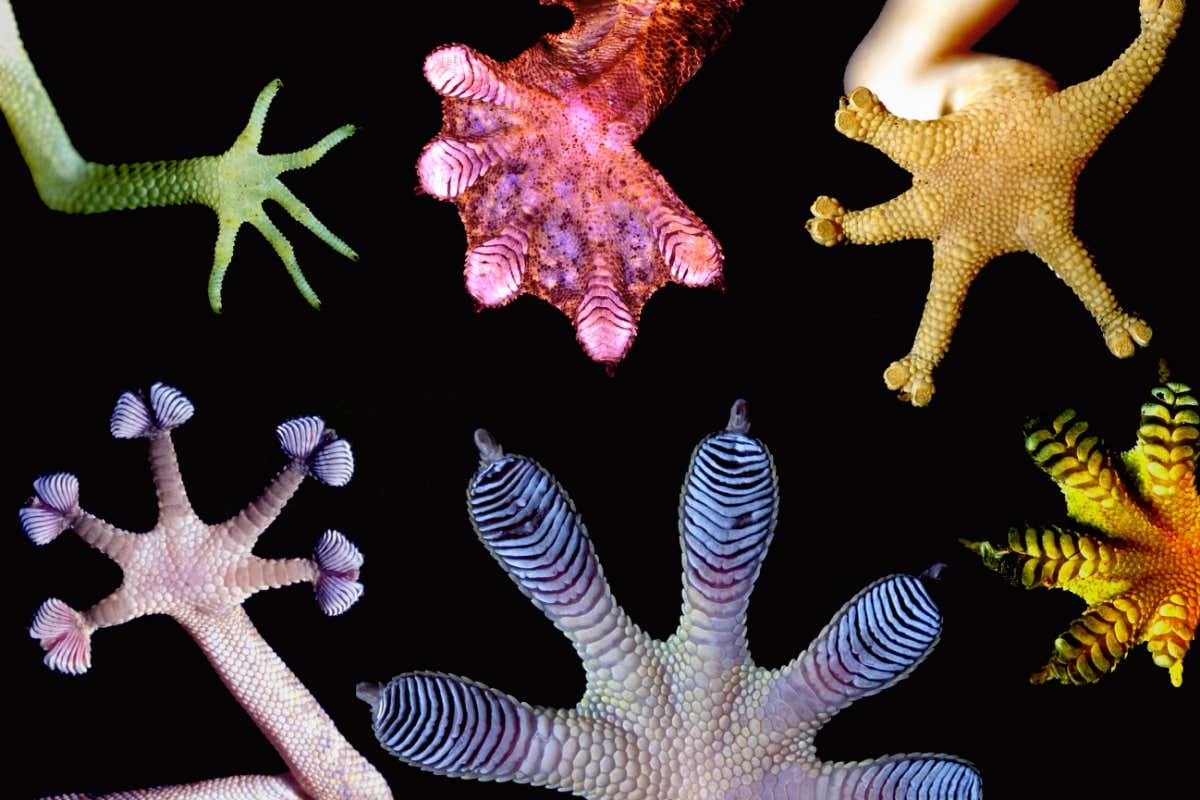By Gege Li
Paul D Stewart/Nature Picture Library/Science Photo Library
Book
Sticky: The secret science of surfaces
Advertisement
Laurie Winkless
Bloomsbury
WATCHING paint dry isn’t normally a very exciting affair. But it turns out there is more happening at the surface – and indeed all surfaces – than meets the eye. Understanding what is going on there might help us improve how we design and engineer technologies and unravel key scientific questions.
At least, that is what Laurie Winkless says in her new book Sticky: The secret science of surfaces. It is a revealing look at the forces at play when materials come into contact, and the experiments and innovations that have come about from studying these interactions in both natural and artificial settings.
The book starts out by debunking the very terms that we might think of when two things meet: stickiness or slipperiness. There are no definitions or ways to measure how sticky or slippery something is, writes Winkless.
When it comes to stickiness, the interactions that are happening at the point where one surface meets another – be it air, water or some other medium – are what matters. To make a good can of paint, for example, it is all about the chemical reactions, from how the pigments and binders mix to the way the paint dries in the air.
With drying, getting the pigment to stay on the surface once the water evaporates is a challenge. Careful considerations that draw on fundamental particle science – including the interactions between hydrophilic pigments and hydrophobic molecules – are key to making paint stick just right as it dries.
At the heart of most surface interactions is friction, the force that resists motion when surfaces slide against each other, holding objects in place or slowing them down. One example of friction’s power that Winkless explores is the gecko, an animal that has puzzled and fascinated researchers for decades. Known for the remarkable sticking and unsticking ability of its feet, the gecko can grip and move with ease over most surfaces, even ones that are inverted or slippery.
Studies have now revealed that this is thanks to tiny hairs covering the gecko’s toes. The stickiness is “switched on” by small electrostatic forces forming between the foot and the surface, then “switched off” simply by angling the foot differently.
The gecko’s ultra-sticky feet – “the smartest on-off adhesive in the world”, says Winkless – are so impressive that they have inspired robots that can scale surfaces and adhesive hand pads that allow humans to climb glass walls. “We can create, build, join, enhance and beautify objects through clever design and chemistry,” writes Winkless. “To my mind, there’s no doubt that surface science shapes our world.”
Even so, contact between surfaces may not be entirely what it seems – since even dry surfaces probably have a film of water between them, and many are rough and uneven. This means we need to zoom in if we are to learn what is really going on, says Winkless. To do this, she looks at how things make contact at the atomic level, exploring nanoscale technologies used in welding and lubricants, and microscopic tools for measuring friction.
Friction is perhaps the biggest enigma of all. We still haven’t figured out how to bridge the gap between friction on the atomic scale and larger, more classical systems, such as engines. If we could figure this out, it would be “transformative”, writes Winkless, and may help with everything from building nanorobots to designing precision instruments.
“Despite the astonishing complexity of surfaces, we have somehow learned to navigate and control them”
But she is optimistic that our current knowledge isn’t going to hold us back. “Despite the astonishing complexity of the science of surfaces, we have somehow learned to navigate, and in many cases, control it… to focus solely on what we don’t know would be doing a disservice to what we do know,” she writes.
On that front, Sticky certainly works as a comprehensive introduction to surfaces, or the “world that hides in plain sight”, as Winkless puts it. She draws on a multitude of work to make a solid case that there is much to learn from casting our focus on these interfaces – maybe even enough to convince you that watching paint dry isn’t boring after all.
More on these topics:
































